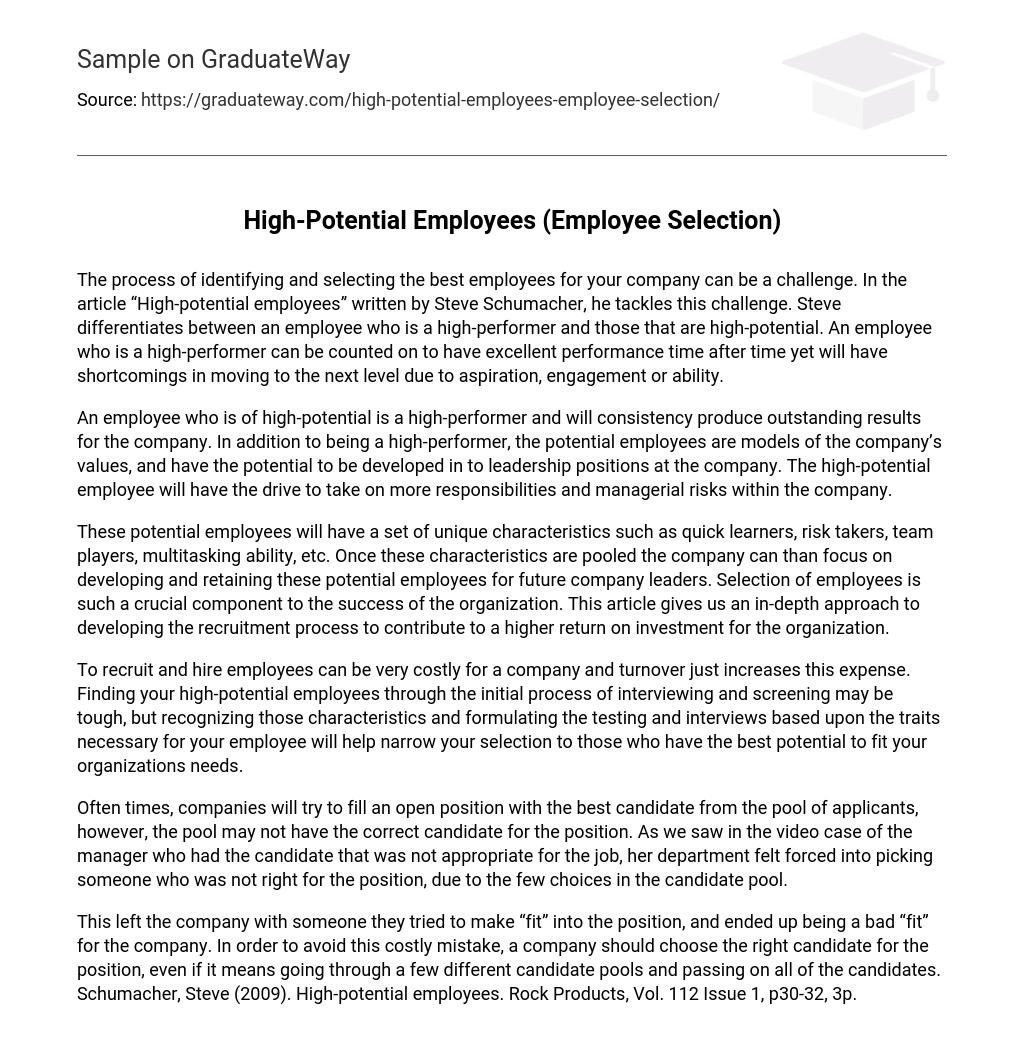The process of identifying and selecting the best employees for your company can be a challenge. In the article “High-potential employees” written by Steve Schumacher, he tackles this challenge. Steve differentiates between an employee who is a high-performer and those that are high-potential. An employee who is a high-performer can be counted on to have excellent performance time after time yet will have shortcomings in moving to the next level due to aspiration, engagement or ability.
An employee who is of high-potential is a high-performer and will consistency produce outstanding results for the company. In addition to being a high-performer, the potential employees are models of the company’s values, and have the potential to be developed in to leadership positions at the company. The high-potential employee will have the drive to take on more responsibilities and managerial risks within the company.
These potential employees will have a set of unique characteristics such as quick learners, risk takers, team players, multitasking ability, etc. Once these characteristics are pooled the company can than focus on developing and retaining these potential employees for future company leaders. Selection of employees is such a crucial component to the success of the organization. This article gives us an in-depth approach to developing the recruitment process to contribute to a higher return on investment for the organization.
To recruit and hire employees can be very costly for a company and turnover just increases this expense. Finding your high-potential employees through the initial process of interviewing and screening may be tough, but recognizing those characteristics and formulating the testing and interviews based upon the traits necessary for your employee will help narrow your selection to those who have the best potential to fit your organizations needs.
Often times, companies will try to fill an open position with the best candidate from the pool of applicants, however, the pool may not have the correct candidate for the position. As we saw in the video case of the manager who had the candidate that was not appropriate for the job, her department felt forced into picking someone who was not right for the position, due to the few choices in the candidate pool.
This left the company with someone they tried to make “fit” into the position, and ended up being a bad “fit” for the company. In order to avoid this costly mistake, a company should choose the right candidate for the position, even if it means going through a few different candidate pools and passing on all of the candidates. Schumacher, Steve (2009). High-potential employees. Rock Products, Vol. 112 Issue 1, p30-32, 3p.





